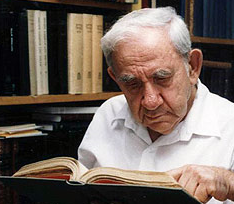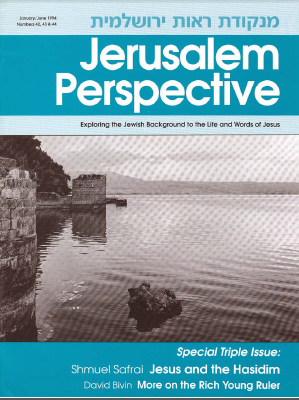We were honored to present, in Jerusalem Perspective 42, 43 & 44 (Jan.-Jun. 1994), Professor Shmuel Safrai’s article, “Jesus and the Hasidim.” Although Safrai had touched on this subject in other writings, this was his most definitive treatment.
In the nineteenth century many scholars identified the Hasidim with the Essenes. Early in the twentieth century Adolf Büchler proved that this identification was erroneous (Types of Jewish-Palestinian Piety from 70 B.C.E. to 70 C.E. [London, 1922]); however, Büchler believed that the Hasidim were just sages who differed from other Pharisaic sages only by being more pious. Safrai has shown that, although the Hasidim were similar to the Pharisees in many ways and the name “Hasid” does mean “pious,” the Hasidim were not identical with the Pharisees. The Hasidim formed a distinctive stream of thought in ancient Judaism that was characterized by its emphasis on the practice of Torah rather than its study. The Hasidim had a literary tradition and their own unique halachic practices. (These ancient Hasidim are not to be connected with members of the Jewish mystical sect founded in the southeast of Poland-Lithuania about 1750 C.E.)
Safrai has produced a detailed description of the Hasidim, and identified from among rabbinic literary works those that originated in Hasidic circles. His research enabled him gradually to sketch a composite portrait of the Hasidim. When he was finished, he discovered that this portrait was very much like the portrait of Jesus in the Gospels.
Safrai’s insights will revolutionize the study of Jesus and allow scholars to reexamine the New Testament texts from a new perspective. Safrai’s discovery may help explain, for instance, why there was tension between Jesus and the Pharisees.
David Bivin
To read Safrai’s article, “Jesus and the Hasidim,” click here. For a free PDF download of the JP issue in which this article originally appeared, click here.




